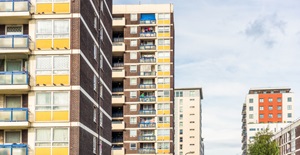Out-Law Analysis 4 min. read
High-rise building safety reform: new approval gateways

27 Jun 2019, 11:25 am
Gateway points will be introduced before planning permission is granted, before construction begins and before occupation. At each of these three points, 'dutyholders' under the new regime will have to demonstrate to the new building safety regulator how they are actively managing risk before they can proceed to the next stage of the development.
The UK government is consulting until 31 July 2019 on its proposals for a new system of building safety regulation during the construction and occupation of high-rise residential buildings. It will apply to both new and existing buildings, and may ultimately be extended to a much wider range of buildings where people sleep. The government will consider responses to the consultation over the summer and publish its own response in the autumn. We expect any changes from the published proposals to be fine tuning rather than a fundamental rethink.
The intention behind the new system is to move away from reliance upon building control bodies identifying and assessing risk, to a system where dutyholders take ownership and demonstrate to the regulator how they will manage fire and structural safety from the earliest design stages through the whole life cycle of the building. For more about dutyholders and their responsibilities during construction, see our separate Out-Law article.
Gateway one - before planning permission is granted
The first gateway is the least onerous of the three new gateways. Its purpose is to ensure that there is consultation with the local fire authority at the earliest possible stage.

Katherine Metcalfe
Partner
The second gateway represents a fundamental shift in how we build in England. We expect this to significantly reduce the scope for value engineering and to significantly increase construction costs.
Gateway one will apply only to new high rise residential buildings of 30 metres or more. It may also be extended to other developments in the 'near vicinity' of these buildings, depending on the outcome of the consultation.
The main features of gateway one are:
- making local fire and rescue authorities 'statutory consultees' during the planning process, requiring the local planning authority to consult with them before granting planning permission; and
- requiring the client to submit a fire statement covering fire service vehicle access and access to water supplies with the planning application.
Gateway two – before construction begins
The second gateway is the most significant of the three gateways. It represents a fundamental shift in how we build in England. Under the new regime, no construction work will be able to start without gateway two regulator approval, and there will be significant constraints on changing submitted plans and specifications. We expect this to significantly reduce the scope for value engineering and to significantly increase construction costs.
Gateway two will apply to new multi-occupied buildings of 18 metres or more, and to significant refurbishment of existing buildings in scope. The new requirements supplement the current 'full plans building application' stage under the 2010 Building Regulations, and encourage very early dialogue between the regulator and dutyholder about risks and how they are being managed.
Dutyholders will need to prepare and submit a number of pieces of the 'golden thread' of information about the building:
- full plans, including a detailed specification in relation to how fire and structural safety risks will be managed;
- 3D digital model of the building 'as planned' – this must also show the construction products to be used;
- a Fire and Emergency File, building on the fire statement from gateway one and updated throughout construction;
- a Construction Control Plan setting out how compliance with the Building Regulations will be achieved and how changes will be controlled and recorded. Major changes affecting safety will need to be agreed with the principal designer and client and approved by the building safety regulator in advance.
A phased approach will be possible for complex development, which would result in multiple gateway two approvals for different parts of the development.
An inspection regime must also be agreed with the new regulator as part of gateway two. The regulator will have the power to require demolition of non-compliant building work, or for that work to be laid open for inspection for compliance.
Gateway three – before occupation
The third gateway is designed to ensure an adequate handover of the building from those involved in its construction to those who will be responsible for managing and maintaining it during occupation.
Gateway three will be introduced on a phased basis for all existing buildings within the scope of the new regulatory regime. Significant work will be required to recreate the golden thread for these buildings.
The following will need to be in place before gateway three approval will be granted:
- a declaration from the principal contractor and the principal designer confirming the building complies with the Building Regulations;
- handover of building safety information on the final, as-built building;
- registration of the building;
- registration of the accountable person responsible for building safety, and the appointed building manager;
- a safety case for the building identifying hazards, describing how risks are controlled and detailing safety management systems including emergency response procedures.
Once the regulator is satisfied, it will issue a building safety certificate permitting occupation. The regulator may attach conditions to the certificate. The certificate and safety case will be subject to review every five years.
Katherine Metcalfe and Laura White are health and safety law experts at Pinsent Masons, the law firm behind Out-Law. Pinsent Masons, in partnership with the British Property Federation, will be hosting a free event to analyse what these proposals mean for the commercial real estate industry on 12 July 2019.


